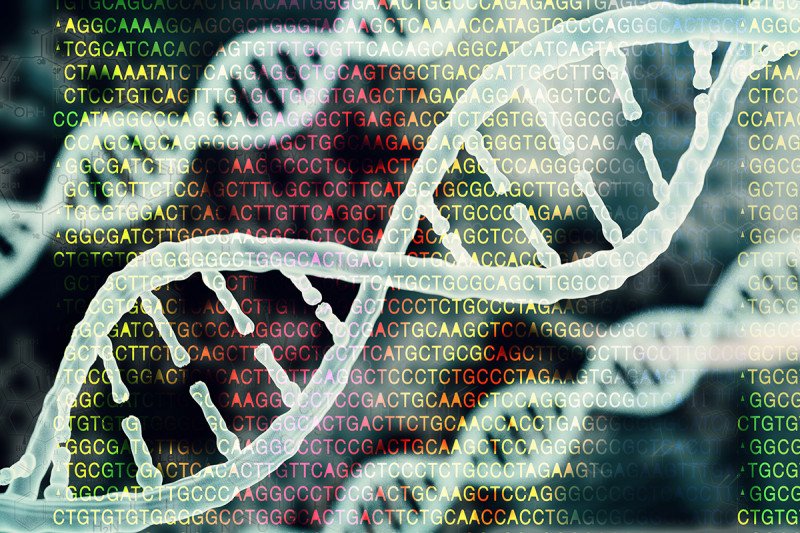
Cells with hobbled DNA repair mechanisms accumulate characteristic alterations in their DNA. These changes can be detected in cancer cells and used to guide treatment.
Ever since the discovery of the BRCA1 and BRCA2 genes, scientists have understood that defects in a cell’s ability to repair specific types of DNA damage can fuel the development of cancer. When people inherit these defects — these mutations — their risk of developing cancer goes way up.
Inherited mutations in BRCA genes are responsible for a significant number of breast, ovarian, prostate, and pancreatic cancers. But mutations in genes that control DNA repair in a similar way as BRCA1 and BRCA2 can also happen sporadically throughout life. That helps explain how nonhereditary forms of cancer arise.
New research from Memorial Sloan Kettering is shining a spotlight on just how common DNA repair defects are in cancer. Investigators examined publicly available data sets from The Cancer Genome Atlas. They found that more than 5% of all tumors have deficiencies in a specific form of DNA repair called homologous recombination (HR). Cancer cells with this defect accumulate DNA alterations in a particular manner that can be recognized through computational analysis.
Because tumors with HR deficiency are more sensitive to certain drugs, including some kinds of chemotherapy, testing for HR deficiency could be a way to tailor treatments to the people most likely to benefit from them. And it could be done across tumor types, not just on cancers deriving from a particular tissue.
“These data had been sitting there for years, but nobody had asked this question directly,” says Nadeem Riaz, a radiation oncologist at MSK and the first author of a new study published in Nature Communications. Dr. Riaz and his colleagues combined their knowledge about DNA alterations with information about known DNA repair genes (there are at least 100 in addition to BRCA1/2) to draw surprising conclusions about the scope and impact of these genetic mistakes.
Every Scar Tells a Story
HR is important in repairing a type of DNA damage called a double-strand break — when both “rails” of the DNA double helix are broken. Losing this repair capability results in DNA changes that can be detected in DNA sequence readouts.
“We call them genomic scars,” says Jorge Reis-Filho, a physician-scientist at MSK and co-senior author on the study with Simon N. Powell, Chair of the Department of Radiation Oncology at MSK. “They are what loss of HR leaves behind.”
“The key thing about these HR-related gene mutations, and the reason they caught my attention, is they can really affect therapeutic choices in the clinic,” Dr. Riaz adds. Cancers with this DNA repair deficiency are especially sensitive to the targeted drugs called PARP inhibitors and platinum-based chemotherapy drugs.
But until this study, the extent of HR-related DNA repair deficiencies — and how to identify them — was not known.
The distinctive pattern of these scars allowed the group to answer a question that has preoccupied the field: Is the loss of one copy of a DNA repair gene enough to cause deficient HR repair or must both copies be lost? (In humans and many other living things, genes come in pairs; the two copies are called alleles.)
“The answer was that losing one allele didn’t result in an obvious repair deficiency, whereas losing both did,” Dr. Reis-Filho explains.
Knowing that loss of both copies is required for HR deficiency allowed the researchers to reclassify some gene variants of previously unknown significance as now being associated with cancer. This information could be useful to genetic counselors whose goal is to help people understand their cancer risk.
A Widespread Cancer Hallmark
“What this paper is suggesting is that HR deficiency could be a pan-cancer biomarker,” Dr. Riaz says. “Whether you’re looking at prostate cancer or lung cancer, you see the same effect of these underlying genetic defects.”
The next step, he explains, is to conduct a basket trial. Patients would be grouped together based on this genetic defect, rather than on the type of cancer. MSK pioneered basket trials. They have proven useful for identifying effective targeted therapies.
Dr. Reis-Filho says that this study underscores the value of identifying DNA repair deficiencies in tumors. “If one understands DNA repair pathway deficiencies in cancer and how to come up with biomarkers to identify the tumors that have them,” he says, “then we can change even chemotherapy into targeted therapy.”
He adds that the study showcases a particular strength of MSK: the opportunity for researchers with different skill sets but common interests to collaborate. “This is one of the most exciting aspects of working at MSK,” he says.




